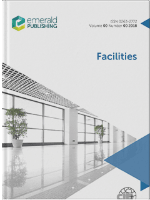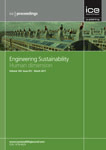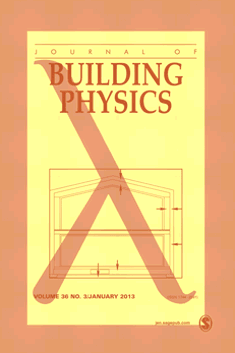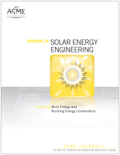
Building Simulation
metrics 2024
Pioneering Research for Energy-Conscious Construction
Introduction
Building Simulation is a leading academic journal published by TSINGHUA UNIVERSITY PRESS, focusing on the critical intersection of building and construction and energy efficiency. With its ISSN 1996-3599 and E-ISSN 1996-8744, this journal stands out in the Q1 category for both Building and Construction and Energy (miscellaneous), as recognized in the latest 2023 category quartiles. It has established itself as an influential platform for disseminating innovative research and developments in building performance simulation and energy use optimization, boasting impressive Scopus rankings at Rank #15/223 in Engineering (Building and Construction) and Rank #15/78 in Energy (miscellaneous), placing it in the upper percentiles of its field. Since its inception in 2008, the journal has fostered a rich dialogue among practitioners, researchers, and students, empowering them to advance sustainable building practices and contribute to global energy conservation efforts. Building Simulation is an open-access journal, making its valuable content accessible to a worldwide audience, further enhancing its role as a vital resource in the quest for innovative building solutions.
Metrics 2024
 1.33
1.33 6.10
6.10 5.20
5.20 49
49Metrics History
Rank 2024
Scopus
IF (Web Of Science)
JCI (Web Of Science)
Quartile History
Similar Journals

Facilities
Innovating the built environment through rigorous scholarly discourse.Facilities is an esteemed international journal, published by Emerald Group Publishing Ltd, dedicated to advancing the scholarly discourse in the multifaceted areas of architecture, building construction, and human factors and ergonomics. Since its inception in 1983, the journal has celebrated over four decades of research contributions, maintaining a robust E-ISSN of 1758-7131 while its print identifier is ISSN 0263-2772. With its distinguished status, it ranks in the Q1 quartile in Architecture and is positioned in the Q2 quartile for both Building and Construction and Human Factors and Ergonomics in 2023. The journal’s Scopus rankings highlight its relevance, achieving a remarkable 88th percentile in Architecture and 68th percentile in Building and Construction. Although not an Open Access publication, Facilities provides vital insights and research findings that cater to academics, practitioners, and students alike, fostering innovation and informed practices across these dynamic fields. Its commitment to high-quality scholarship makes it an indispensable resource for anyone engaged in improving the interaction between people and the built environment.

Russian Journal of Building Construction and Architecture
Unlocking Insights for a Resilient Built EnvironmentRussian Journal of Building Construction and Architecture (ISSN: 2542-0526; E-ISSN: 2542-0526), published by the esteemed Voronezh State Technical University, serves as a vital platform for disseminating innovative research and practical applications in the fields of building construction and architecture. This journal, situated in Voronezh, Russia, aims to explore both the theoretical and empirical aspects of contemporary architecture and construction practices, fostering a robust dialogue among researchers, professionals, and academics. With an emphasis on open access to knowledge, the journal significantly contributes to global discourse by ensuring that findings are accessible to a wide audience. Underlining the importance of sustainable development and cutting-edge technologies in construction, the journal strives to publish high-quality research that addresses the challenges faced in today’s building environment, making it an invaluable resource for those committed to advancing the industry.

Journal of Architectural Engineering
Advancing the Future of Architectural InnovationThe Journal of Architectural Engineering, published by the ASCE (American Society of Civil Engineers), stands as a pivotal resource in the interdisciplinary fields of architecture and engineering. With an ISSN of 1076-0431 and E-ISSN 1943-5568, this journal has garnered a notable reputation since its inception in 1995, currently converging towards 2024. Boasting a Q1 ranking in Architecture and Visual Arts and Performing Arts, alongside respectable Q3 rankings in Building and Construction and Civil and Structural Engineering, the journal places itself in the elite class of scholarly publications, evidenced by its impressive Scopus rankings. Its commitment to providing cutting-edge research ensures comprehensive coverage across various aspects of architectural engineering, facilitating robust interdisciplinary dialogues. Although the journal operates under a traditional access model, its impact on the academic community remains profound, making it an essential platform for researchers, professionals, and students who seek to push the boundaries of knowledge in their respective fields. This journal not only aims to stimulate innovative ideas but also fosters a collaborative environment for advancing sustainable architectural practices in a rapidly evolving built environment.

Journal of Renewable and Sustainable Energy
Empowering Tomorrow's Energy InnovationsThe Journal of Renewable and Sustainable Energy, published by AIP Publishing, stands at the forefront of research in the fields of renewable energy and sustainable practices. With an ISSN of 1941-7012, this journal aims to foster innovative research and exchange of knowledge on sustainable technologies and methodologies that contribute to environmental conservation and energy efficiency. Achieving a prestigious Q2 ranking in the category of Renewable Energy, Sustainability, and the Environment, it ranks 135 out of 270 journals in Scopus, signifying its impactful contributions to the field. The journal, active from 2010 to 2024, provides a platform for authors, analysts, and practitioners to disseminate significant findings that can shape future environmental policies and energy frameworks. Although not currently an Open Access publication, it remains an essential resource for researchers dedicated to advancing sustainable development and energy solutions.

INDOOR AND BUILT ENVIRONMENT
Innovating Research on Indoor Environments and Well-BeingINDOOR AND BUILT ENVIRONMENT is a prestigious peer-reviewed journal published by SAGE PUBLICATIONS LTD, focusing on the interdisciplinary fields of indoor environmental quality, human health, and sustainable built environments. With an ISSN of 1420-326X and an E-ISSN of 1423-0070, the journal has been a significant contributor to research and knowledge dissemination since its inception in 1992, continuing through to 2024. Positioned in the Q2 category of public health, it ranks impressively at #122 out of 665 in the Scopus metrics for Medicine, showcasing its influence and relevance in the field with an 81st percentile standing. While the journal does not currently offer open access options, it remains a vital resource for researchers, professionals, and students eager to explore the critical interplay between indoor environments and public health. With its comprehensive coverage and a commitment to high-quality research, INDOOR AND BUILT ENVIRONMENT plays an essential role in advancing knowledge and practices that contribute to healthier living and working spaces.

Proceedings of the Institution of Civil Engineers-Engineering Sustainability
Fostering Sustainable Practices in Civil EngineeringProceedings of the Institution of Civil Engineers - Engineering Sustainability is a distinguished journal published by Emerald Group Publishing Ltd, focusing on the intersection of civil engineering and sustainability practices. As a Q3 category journal in the field of Civil and Structural Engineering, it offers a critical platform for professionals, researchers, and students to share innovative research that addresses global environmental challenges from 2004 to its forthcoming issues in 2024. With an ISSN of 1478-4629 and E-ISSN of 1751-7680, this journal aims to disseminate vital knowledge regarding sustainable engineering solutions and practices, thereby fostering awareness and prompting action within the discipline. Although not an Open Access journal, it maintains a strong connection to academic and practitioner communities, ensuring high visibility and accessibility through its rigorous peer-review process. Its current Scopus rank places it in the 58th percentile, underscoring its relevance and contribution to the civil engineering domain.

Results in Engineering
Advancing Engineering Knowledge Through Open Access InnovationResults in Engineering is an esteemed open-access journal published by Elsevier, dedicated to advancing the field of engineering through high-quality, innovative research. Since its inception in 2019, this journal has rapidly established itself within the academic community, evidenced by its prestigious Q1 ranking in the Engineering (miscellaneous) category for 2023 and a remarkable ranking of #54 out of 307 in General Engineering according to the Scopus database, placing it in the 82nd percentile of its category. Located in the Netherlands, Results in Engineering provides a global platform for researchers, professionals, and students to disseminate their findings and foster collaboration across diverse engineering disciplines. The journal's commitment to open access ensures that valuable research is accessible to a wider audience, fostering innovation and knowledge sharing. With a progressive approach to publication, Results in Engineering seeks to enhance the engineering landscape by publishing cutting-edge studies that address contemporary challenges and solutions in the field.

BUILDING ACOUSTICS
Exploring the Soundscape of ArchitectureBuilding Acoustics, published by SAGE Publications Inc, is a distinguished journal that serves as a critical resource in the fields of acoustics, building construction, and mechanical engineering. With an ISSN of 1351-010X and an E-ISSN of 2059-8025, this journal has maintained a strong reputation since its inception in 1997, featuring rigorous peer-reviewed research that provides valuable insights into the acoustic properties of buildings and environments. With a commendable Q2 ranking in its categories and a notable standing within the Scopus Ranks, this journal plays a pivotal role in advancing knowledge and practice in its field. Researchers, professionals, and students are invited to engage with cutting-edge studies that address crucial aspects of sound control, environmental noise, and sustainable architectural design. Although not an Open Access journal, Building Acoustics ensures accessibility through various institutional affiliations and library provisions, solidifying its position as an essential publication for those dedicated to enhancing the acoustic performance of built environments.

Journal of Building Physics
Innovating Building Performance for a Sustainable FutureThe Journal of Building Physics, published by SAGE PUBLICATIONS LTD, has established itself as a leading publication within the fields of Building and Construction as well as Materials Science. With a robust Scopus ranking, including a commendable Q2 designation in both categories in 2023, this journal serves as a crucial platform for researchers and professionals aiming to advance the understanding of building performance and thermal dynamics. Operating from the vibrant academic landscape of the United Kingdom, the journal showcases innovative research and critical analyses that enhance sustainable building practices, contributing significantly to the literature from 2000 to 2024. Though it does not currently offer open access, the Journal of Building Physics continues to publish highly-cited work that resonates with its audience, facilitating knowledge exchange and encouraging scholarly dialogue among students, practitioners, and researchers eager to push the boundaries of building sciences.

JOURNAL OF SOLAR ENERGY ENGINEERING-TRANSACTIONS OF THE ASME
Bridging Research and Practical Solutions in Solar Engineering.JOURNAL OF SOLAR ENERGY ENGINEERING-TRANSACTIONS OF THE ASME is a premier publication dedicated to advancing the field of solar energy engineering, under the auspices of the prestigious American Society of Mechanical Engineers (ASME). With the ISSN 0199-6231 and E-ISSN 1528-8986, this journal has established itself as a critical resource for researchers and professionals alike, particularly in the areas of energy engineering and renewable technology. Currently enjoying an impact factor that places it in the Q2 category for Energy Engineering and Power Technology and Q3 for Renewable Energy, Sustainability, and the Environment, this journal effectively bridges impactful research and practical application. Spanning contributions from 1980 to 2025, the journal emphasizes empirical studies, innovative methodologies, and sustainable solutions that resonate with the growing global demand for renewable energy. The journal’s commitment to quality is reflected in its competitive Scopus rankings: 97th out of 272 in Energy Engineering and 124th out of 270 in Renewable Energy. Although not an Open Access journal, it remains a vital forum for disseminating research that shapes our energy future. Located in New York, this journal serves as a cornerstone for those in academia and industry to stay abreast of the latest advancements in solar energy technologies and their application in sustainable development.